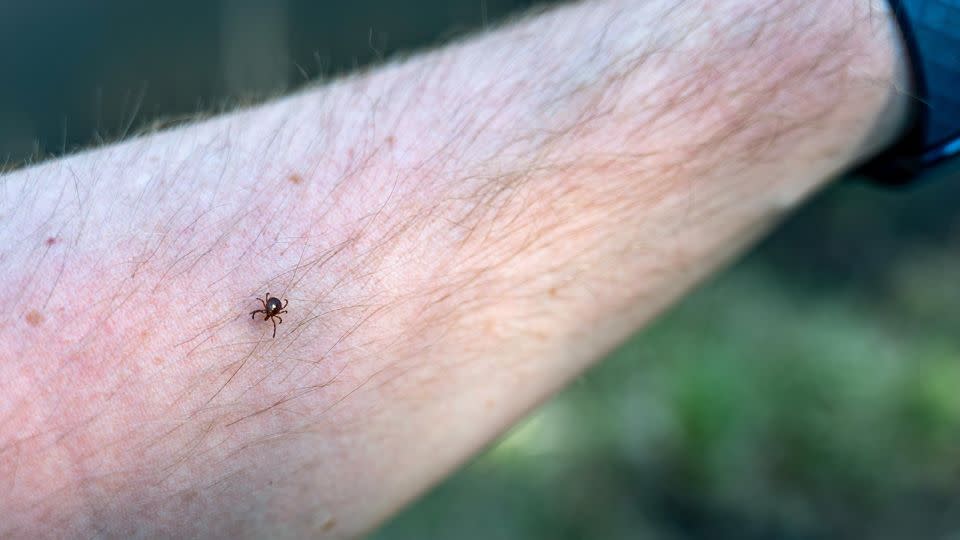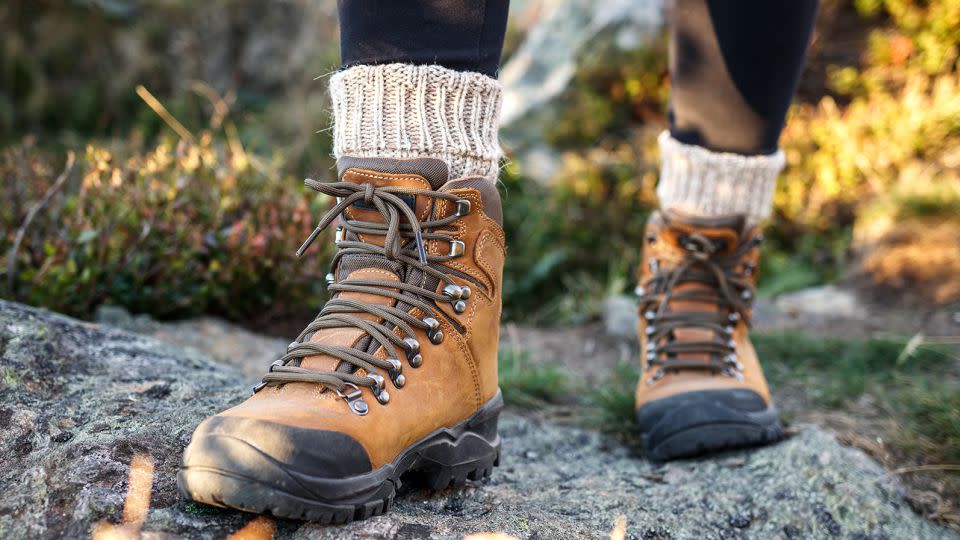There are ‘more ticks in more places’ — here’s how to avoid these bloodsuckers
Editor’s note: Get inspired by a weekly roundup on living well, made simple. Sign up for CNN’s Life, But Better newsletter for information and tools designed to improve your well-being.
Maybe you spotted one crawling up your leg after a hike through tall grass or felt one on your dog’s back as you ran your hand through its fur. If you’re unlucky, maybe you found one already burrowing into your skin, engorged with your blood.
Ticks are parasitic bloodsuckers, capable of spreading deadly disease, and they’re becoming increasingly common. Here’s what you need to know about them.
Ticks 101
Ticks are arachnids, close cousins of mites and more distant cousins of spiders. There are more than 800 species of ticks found around the world, and 84 that have been documented in the United States. However, only a handful in the US bite and transmit diseases to humans. The most common ones are blacklegged ticks (also known as deer ticks, but they feed on lots of animals besides deer), lone star ticks, American dog ticks and brown dog ticks.
After a tick egg hatches, it goes through three life stages: larva, nymph and adult. Both male and female ticks feed on blood by inserting their barbed, straw-like mouthparts into the skin of their host (unlike mosquitoes, which only bite if they’re females preparing to lay eggs). However, only female ticks drink to the point that they become engorged.
“When you see a super big and engorged female, that means she’s going to be laying eggs and starting that life cycle process over again,” said Kait Chapman, an extension educator and urban entomologist at the University of Nebraska-Lincoln.
These arachnids change dramatically in size and appearance based on how old they are and how much blood they’ve drunk. “The nymph blacklegged tick, if you put these unfed ones on a poppy seed bagel, they blend in quite nicely,” said Dr. Thomas Mather, a professor of public health entomology at the University of Rhode Island and director of that school’s Center for Vector-Borne Disease and its TickEncounter Resource Center. Meanwhile, an engorged adult female of the same species can swell to the size of a pea.
Tick bites and diseases
While there are some months when different species and life stages are more active, it’s possible to get bitten by a tick any time of year. If you find a tick attached to you (or your pet), you should remove it carefully.
“The recommendation is that you use a pair of tweezers, get the tick by its head as close to the skin as possible and pull it straight out,” Chapman said. “We don’t want to twist, because we could leave part of that mouthpart embedded in the skin. And we don’t want to grab the body because if you squeeze the body the tick could regurgitate more, which means that you’re increasing your chance of getting tick-borne illness.”

Your impulse might be to squash the freshly removed tick, but it’s better if you drown it with hand sanitizer or rubbing alcohol and keep it to show to an expert or at least take a photo. That way, you can identify what kind of tick it is and how long it’s been feeding; the University of Rhode Island’s TickEncounter website has tools based on coloration, size and geographic location.
It’s important to identify the tick because certain species carry different diseases. They pick up bacteria, viruses and other microbes from the blood of infected hosts, and when they bite a new victim, they can pass those pathogens along.
Blacklegged tick larvae and nymphs, for instance, often feed on white-footed mice, which can carry a bacterium called Borrelia burgdorferi. When a tick that’s fed on one of these infected mice then feeds on a human, it can pass along that bacterium, which causes Lyme disease.
Lone star ticks, on the other hand, don’t feed on white-footed mice and consequently aren’t carriers of Lyme. (They do carry other disease-causing microbes, though, and their bites can introduce a sugar molecule into the bloodstream that makes people allergic to red meat.)
Preventing tick bites
The diseases carried by ticks can be debilitating or even life-threatening, and the risk of infection increases the longer a tick has been on you. While there are some treatments available, it’s best to avoid getting bitten in the first place.
Various studies have suggested factors that could play a role in tick attraction, including a recent paper showing a connection between tick attraction and static electricity in a laboratory setting. And while ticks are attracted to cues such as the carbon dioxide exhaled by animals, they tend to lie in wait rather than actively seeking out their prey.
“Contrary to popular belief, they don’t fall from trees. They simply sit at the edge of a tall blade of grass, for example, that’s maybe hanging over someplace, and they’ll put their front leg out. We call that questing,” Chapman said. “They will wait for that host to brush right by them, and so that’s primarily how people get ticks: They brush by it; it attaches to their leg or their clothes.”
Insect repellents containing DEET, picaridin and oil of lemon eucalyptus have been approved by the Environmental Protection Agency to protect against ticks. However, these chemicals work differently against ticks than they do against mosquitoes.
For instance, DEET “burns the feet of ticks, and they fall off because their feet are burning,” as opposed to interfering with the tick’s ability to find its prey the way DEET affects mosquitoes, Mather said. What’s more, “as soon as the product is dried, it doesn’t burn as much, so it really doesn’t last very long for ticks.”

Instead, Chapman recommends preventing tick bites by covering your skin and tucking the bottoms of your pants into your socks. Ticks also are killed by half an hour in the dryer, so toss your clothes in as soon as you get home, even before you wash them.
What’s more, “we favor wearing treated clothes with permethrin — it’s far, far more effective” than bug spray, Mather said. “It blocks nerve conduction in ticks, and it makes them hyper-excited and then they just lose function pretty quickly, and it actually ends up killing them.” Depending on where you live, he said, it might also make sense to investigate exterminating ticks living in your yard.
These precautions might seem extreme, but to Mather, they’re the way of the future, because “we live in a ‘more ticks in more places’ world, and more people are being exposed.”
Climate change may play some role in the spread of ticks, but Mather said he believes that the influx of the parasites has more to do with white-tailed deer becoming more common in areas where higher densities of people live. As a result, he said, “More people are being exposed to the ticks that are reproducing on white-tailed deer.”
Despite the spread of ticks and the severity of illnesses that they can cause, Chapman stressed that with proper precautions (for you and your pets — ask your vet for tick preventatives), they shouldn’t hold you hostage inside your home.
“Yes, ticks exist. Yes, they can be a public health concern, but we don’t want you to let ticks keep you indoors,” she said. “You should still be able to go outside and enjoy nature, but you just have to, once again, perform those tick checks. So take a little bit of time. Do that.”
Kate Golembiewski is a freelance science writer based in Chicago who geeks out about zoology, thermodynamics and death. She hosts the comedy talk show “A Scientist Walks Into a Bar.”
For more CNN news and newsletters create an account at CNN.com

